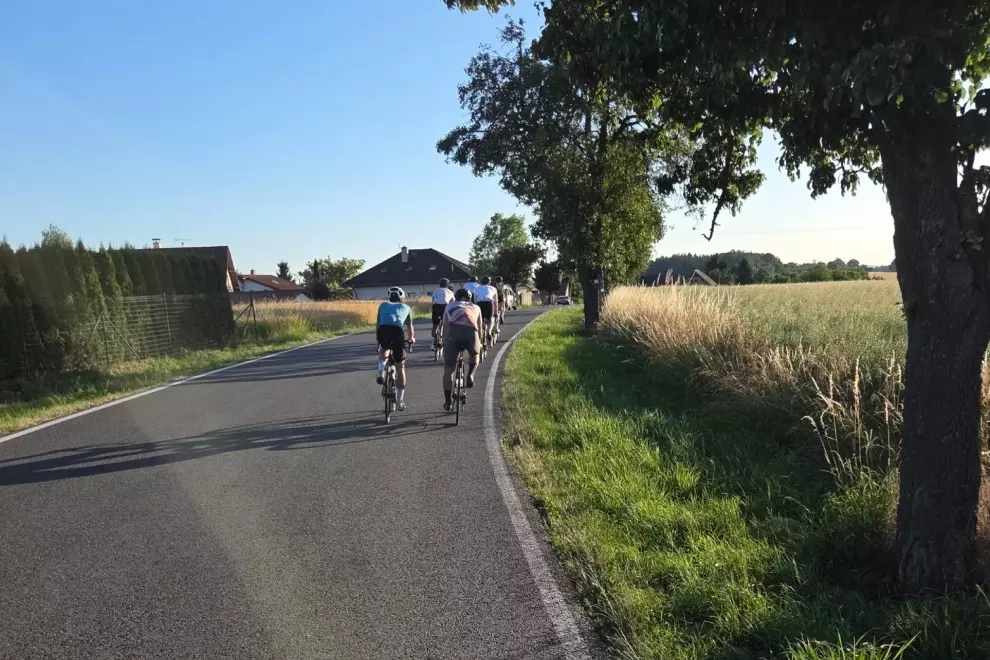Cyclists are not welcome
Graeme is close to 60 years old, he comes from the country of Devon, England, and has always been an active person with a love for the outdoors. He is a teacher by profession, with a Sports Science degree and a passionate cyclist. But it hasn’t always been that way. As he started on his career, got married and had children, time became precious. But he kept cycling. It was only in the 80s and 90s when he lived in Southampton, a fast-growing city dealing with a huge increase in traffic, that cycling left his life.
https://www.instagram.com/p/BuHY_qmhm-a/
“Car drivers didn’t like cyclist especially as we cyclists were quicker getting from A to B in the rush hour. There were no cycle lanes to speak of, and I found myself on the blunt end of at least two cars, and a caravan that the driver forgot he was towing! Add to that, that off-road riding was nearly impossible in the wet due to the clay soils. I was disillusioned to say the least. It was easier to forget cycling and go windsurfing and paragliding, so I did.”
The breakdown
Just like car drivers, life didn’t go easy on Graeme. Since adolescence, his life has been plagued with emotional distress. He also suffered a lot of trauma through the sports he loved, flying and climbing, one of which left him with a crushed spinal vertebra. The physical injuries healed over time, but his mental health kept declining. He struggled through a series of depression-based illnesses that culminated in a major breakdown about 15 years ago.
https://www.instagram.com/p/B47ca5GArEa/
“I lost my career as a teacher, my home, and everything else as the storm ravaged my mind. After three family deaths, and four years, I took a holiday in Scotland where I met several cycle tourists. It reminded me of how much I used to enjoy cycling myself, some eighteen years previously.”
Traded Harley for a bicycle
It took Graeme several years to even start trying to get back to normal and build a new life. It was a very slow process, but he found a big help – cycling.
“My big sports motorbike was traded for a Harley, and then my Harley was traded for a bicycle! On my return to cycling, I also discovered the world of folding bikes from Dahon, Brompton, and Bike Friday etc. I was amazed you can buy a bike that enables you to ride to the station, fold it and walk on to the train or bus. On arrival at your destination you can unfold it, and ride the cycle-ways to work. If you’re lucky you can then fold it and walk up to the office where it lives by your desk whilst you take a shower.”
https://www.instagram.com/p/B4sNu9uAa5r/
He bought one of the mentioned Dahon road bikes and began cycling. Very quickly he noticed his self-esteem was boosted as was gradually his physical and mental well-being too. With a folding bike he could ride places knowing he can always catch a bus back if he was unable to continue. He also cited improved cycling infrastructure as a big part of why he was able to return to cycling.
“I could ride on traffic-free trails without the worry of cars, and I could talk to whoever I wished and build social relationships again. A new world of acceptance and infrastructure for cyclists helped make this possible. On these routes, cafes had sprung up all over the place making it easy to stop and refresh, look at the scenery etc. Cycling has come in from the cold and is no longer the preserve of a few die-hards as it was perhaps previously perceived.”
From darkness to a 4000-mile charity ride
Riding a bicycle became such a vital part of his recovery that he wanted to raise awareness about the potential benefits of cycling on mental health. He also wanted to raise funds for a charity called Sustrans which built the National Cycle Network that made his return to cycling possible. So, he decided to do a 4000-mile unsupported charity cycle ride around the coast of the UK. It ended up being another milestone in his recovery as it took him four months of cycling and living in a tent to complete it. He tells the whole story from the darkest moments all the way to completing his charity ride in his book called Riding2Recovery: a journey within a journey.
https://www.instagram.com/p/B2wXx5_gZw3/
“The ride itself led me through many incredible places where I stood in awe of the scenery, or simply talked to the people around me. Riding unsupported and living in a tent for four months, I rediscovered a forgotten, simple life, and a place where I could manage my health from day to day.”
Nowadays he continues to volunteer for Sustrans and spread awareness through his Riding2Recovery initiative which you can find on Facebook. Thank you for the inspiration Graeme!




